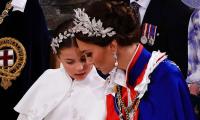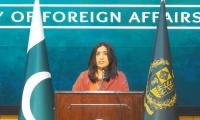The modern nation-states are not home to culturally homogenised people but of varied groups that may be differentiated mostly on the grounds of religion, race, and language. Despite sharing common citizenship, the status and relationship between majority and minority groups are not given and fixed but flexible and constructed.
The identity of the majority-minority group is rooted in the binary construction of ‘self’ and ‘other’ where the former is always placed at a privileged/dominant position from its opposite. According to the French philosopher Jacques Derrida, ‘self’ and ‘other’ are different, however, mutually constituting each other. The ‘self’ is constantly defined in relation to the ‘other’. The ‘other’ who is represented as a direct opposite of the ‘self’, consequently, is excluded from the identity of the latter. From the critical theory perspective of international politics, the reification/materialisation of boundaries between ‘self’ and ‘other’ is essential for identity construction and the establishment of power relations. By implication, majority-minority group identities are constituted in a way where ‘majority self’, which is dominant/privileged, excludes ‘minority other’, which is marginalised/underprivileged, to exercise power relations that need to be critically evaluated in a specific context.
Minorities in Pakistan may be identified on religious, gender, geographical, and cultural lines. From a gender perspective, women are viewed as underprivileged and marginalised due to their constrained role in political and financial spheres. On geographical and cultural fronts, various ethnic groups allegedly represent division and sub-nationalities as prescribed by Christophe Jaffrelot in his book “Pakistan: Nationalism without a Nation.” The religious/faith-based identities; predominantly, Muslim, Hindu, Christian, Ahmadi, Parsi, may be categorised as the most significant. According to an estimate, Muslims constitute 96.28 percent of the country’s population, whereas Christians are 1.59 percent, Hindus 1.60 percent, Ahmadis 0.22 percent, and other religions are about 0.07 percent of the total population. The relationship between majority-minority groups is a complex phenomenon that needs to be understood in the specific cultural and historical context of Pakistan.
Historically, the Muslim League politics was aimed at ensuring constitutional guarantees for Muslim minorities vis-ˆ-vis the Hindu majority on the Indian subcontinent. In the post-1940 period, the fear from the Hindu majority; living under Hindu rule after the British withdrawal, harnessed the otherwise divided Muslim community in support of partition.
Dwelling on differences with the Hindu majority, the idea of ‘two-nation theory’ that portrayed Hindu and Muslim as two different communities who could never live together became the raison d’etre for separation and, subsequently, the establishment of Pakistan. Under the leadership of Mohammad Ali Jinnah, the politics of the Muslim League, which was based on communalism; exclusion of ‘Muslim self’ from ‘Hindu other’, was a success. Being sensitive to Muslim minority experience on the Indian subcontinent, Jinnah, however, became a staunch supporter of the rights of minorities in post-independence Pakistan.
The founder of Pakistan, Quaid-i-Azam Mohammad Ali Jinnah vehemently projected unity, justice, and equality for all communities in Pakistan. In support of minorities, he, during his address to the first Constituent Assembly on August 11, 1947, stated that ‘you are free to go to your temples, you are free to go to your mosques or to any other places of worship.’ Quaid perceived majority and minority communities as equal citizens of Pakistan, as reflected in the green and white colours of the Pakistani flag, who need to be treated in a just and impartial manner. He further pointed out that ‘You may belong to any religion or caste or creed - that has nothing to do with the business of the State ... we are all citizens and equal citizens of one State ... in course of time Hindus would cease to be Hindus and Muslims would cease to be Muslims, not in the religious sense, because that is the personal faith of each individual, but in the political sense as citizens of the State.’ It reflected that he placed religion as a private or personal matter and urged that differences must not be illuminated in the public or political sphere. His idea of ‘Pakistani identity’, therefore, was inclusive of all irrespective of any cast, race, or religion.
After Quaid’s demise, his message of equality was partially incorporated in the constitution of Pakistan. Chapter -II of the 1973 constitution of Pakistan vividly stipulates guarantees basic human rights. It provides that all communities have the freedom to practice their religion as well as they will be provided equal opportunities to progress and fair trial. Nevertheless, since Pakistan was created in the name of Islam, Muslim majority-bias withered away Quaid’s vision of fairness and justice. The majority community perspective may be observed in state identity as well as nation-building processes in Pakistan.
After Jinnah, the political leadership crafted Pakistani identity sharply along the religious lines. For instance, the Objective Resolution 1949 stipulated Islam as the official religion of the state and categorically restrained non-Muslims from holding the highest office (President, Prime Minister) in Pakistan. Later, these provisions were incorporated in 1956, 1962, and 1973 Constitutions of Pakistan. The 1973 constitution reaffirms the above-stated provisions (see Article 2 and 41 (2)) and further ensures the state’s active role in warranting the Islamic way of life by bringing all existing laws in conformity with the Holy Qur’an and Sunnah (see Article 31 and 227(1)). The Islamic identity and other mentioned provisions not only satisfied the demands of ‘Islamization’ but also institutionalised the role of the state in administering the religious lives of the people of Pakistan.
Fast forward, the incumbent government of Prime Minister Imran Khan promised protection of minorities and equal justice to every citizen regardless of one’s faith and ethnicity during the election campaign. Certain developments, for instance, the acquittal of Asia Bibi who was imprisoned in an allegedly false blasphemy case for almost a decade, the permission to register Christian marriage with an official certificate, nullification of the marriage of a Hindu minor girl, Mehik Kumari, who was abducted and forcibly converted to Islam to marry a Muslim, opening up of Kartarpur Corridor for Sikh religious rituals, may be viewed positively.
However, the overall state of religious freedom remained under constant threat. The faith-based minorities faced discrimination and persecution; misuse of the anti-blasphemy law forced conversions and enforced disappearances, during 2019-2020. The Annual Security Report 2019 of the Centre for Research and Security Studies recorded faith-based minority violence where approximately 85 Shia Muslims (Muslim minority faction) and two Ahmadis were killed, while one Christian was injured.
Another study reveals that Ahmadi’s worship places, temples, and churches were attacked numerously during 2018-2020. Arguably, incidents of hate speech, condemnation of specific religious factions on state media, and restricting educated and trained people from holding public offices indicate that faith-based discrimination is structurally rooted in Pakistan.
The above situation is gruesome, and it may implicate Pakistan quite negatively at the international level. Most recently, the USA designated Pakistan in the list of ‘Countries of Specific Concern’ (CPC) for gross violations of religious freedom under its International Religious Freedom Act. Due to such an ever-growing concern, states like Pakistan cannot take refuge under the umbrella of state sovereignty. In the contemporary human rights discourse, the historically established idea of state-sovereignty has become contingent and at times, the international community may intervene on humanitarian grounds where the majority is involved in the systematic violations of minority rights.
This contingency element implies that states can only permissibly claim sovereignty if they fulfil the rights of their people, and they lose it when committing serious human rights violations.
How can we resolve it? May be through more democracy and less state coercion? Or some people would suggest special rights ought to be granted to minorities but then where will it stop?
In Quaid’s Pakistan, all citizens must enjoy equal rights regardless of their varied beliefs and other tangible and intangible dispositions. To this end, a state initiative of constructing alternative discourses of Pakistani identity based on equality and impartiality is the need of the hour. This identity must be inclusive of all religions, races, casts, and ethnicities to cultivate a culture of tolerance, pluralism, and democracy.
— The writer teaches International Relations at the School of
Politics and International Relations, Quaid-i-Azam University, Islamabad and may be accessed at aishayounus@qau.edu.pk
Hafiz Naeem castigate the ruling elite for their monopolization of state resources
Total count of infected districts reaches 33 for the year 2024
Spokesman disclosed that Adeel and Zain had orchestrated a plot to assassinate Federal Minister Riaz Hussain Pirzada
Revenue of the Labour Department had been increased so that the packages for the labourers should also be enhanced...
EV Manufacturers have proposed amendments in Customs Act to Ministry of Industries and demanded allowing SKD parts of...







